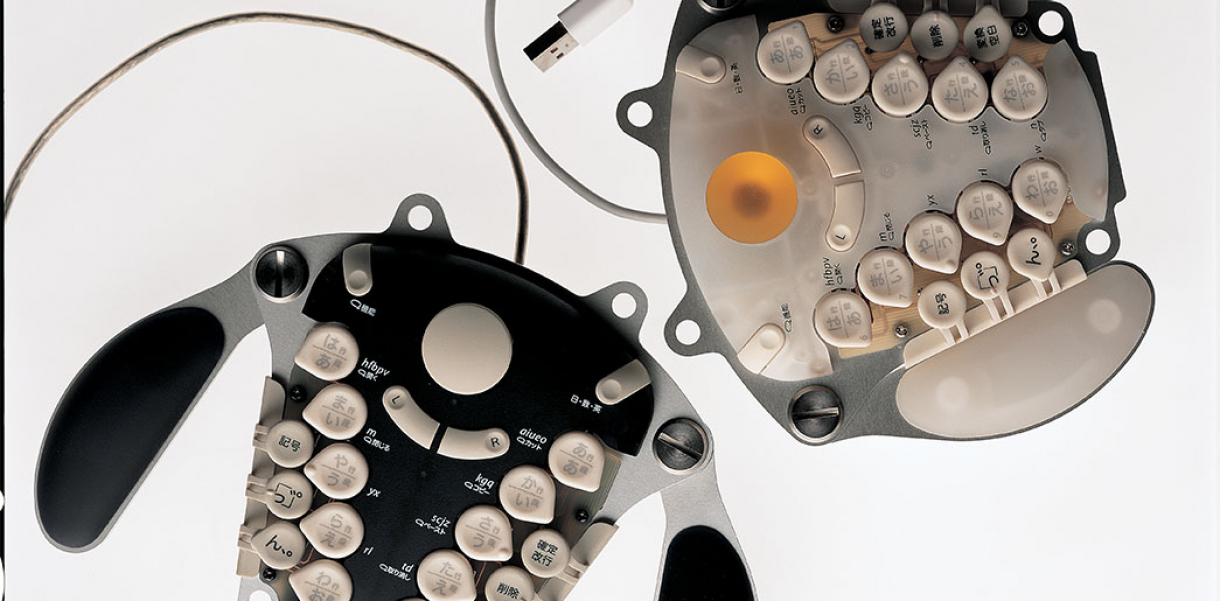The keyboard was first designed for professional typists who worked in the office environments of the Western countries. As such, they are made so that a person can type by sitting at a desk and moving ten fingers on a keyboard. However, user experience and situations have diversified with the arrival of the Internet and the personal computer. Keyboards, which until now, had been acknowledged as the universal interface, has become inadequate and insufficient for the various needs and situations that have sprung from the advancement of technology.
“tagtype” is a product that suggests a new solution to such a challenge.
If the traditional keyboard is a car with manual transmission, then “tagtype” comes with automatic transmission. While traditional keyboards require practice before one becomes familiar with it, tagtype can be used immediately.
The keyboard simplifies typing in Japanese by arranging the 50 phonetic sounds in 10 columns and 5 rows on a universal keyboard. This creates a liberty of positions and simple operation methods, making it easy to use by elderly, the disabled, and children. The keys can be pressed by both hands within a thumbs’ reach, similar to game consoles. In other words, 80% of operation is compacted within a small area equal to 10% of the conventional keyboard.
The design not only corresponds to specific Japanese values and needs but also facilitates possible conversions through adding electronic devices or changing the program on the microcomputer.
“We initially envisioned tagtype as a tool for physically disabled persons, but it evolved into a tool that can be used across all ages, skill levels, and purposes. tagtype is our idea for inputting words into personal computers and electronic devices based on the table of 50-sound Japanese syllabary,” said the Takram team behind the design.
“We hope that tagtype will make computers and electronic devices friendlier and customizable by anyone.”
Designed by
Yamanaka Shunji, Tagawa Kinya, Honma Jun - Tokyo, Japan
Website
www.takram.com






